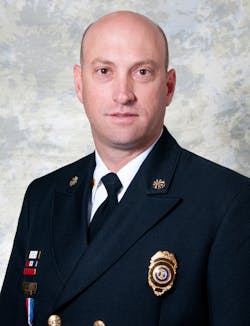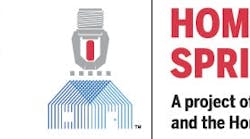Are you ready for “The Fire”? Is this the once-in-a-career fire? Is this a fire that claims 100 citizens, nine firefighters, 29 firefighters, 15 occupants of a nursing home, six older adults or one small child or one firefighter? Do the numbers matter? Fire in its uncontrolled state is destructive to our lives.
When I first went to South Carolina as Superintendent of the Fire Academy, it was after “The Fire”; that’s how most referred to the Sofa Super Store fire. When I first heard burn survivors from the Station Night Club at the Phoenix Society’s World Burn Congress share their stories, they referred to that life-changing event as “The Fire.” It seems that “The Fire” takes on larger-than-life proportion as we work to make sense of it and find lessons learned.
Too often, I hear “fires are down.” Too often, firefighters say “I wish we had more fires” or we spend too much time waiting for “the big one” or a “good one.” I can remember as a young firefighter hearing a keynote speaker say we should be called emergency response technicians. I lived through the days when we were going to change the name of the fire department to the Department of Emergency Services; got the T-shirt. Some of this I was in favor of and some of it I wasn’t. Then I matured and realized it wasn’t about me, it was about service to the citizens, those I swore an oath for. The one that I vowed to make sure I did everything possible so that they didn’t experience “The Fire.”
According to the National Fire Protection Association (NFPA), fires in 2013 were up 16%. I know of several states where not only our fires are up, but so are fire fatalities. This also means greater risks to firefighters. It really is about firefighter safety too.
Following the Station Night Club fire, most fire departments around the country began or renewed inspections of assembly occupancies, especially unannounced. At the time, I remember us ramping up inspections on assembly occupancies and making sure we reduced the code occupant load from 300 to 100 in assembly occupancies. We weren’t as ready as we should have been because we hadn’t focused on those target hazards. I believe Massachusetts was the only state to require retrofit of such occupancies. This action resulted in an estimated 770-plus structures that have a greatly reduced risk of anyone dying in, will stay on the tax rolls longer and bring in more sales tax than the thousand commercial occupancies without fire sprinklers that will burn down.
Why do we continue to wait for a tragedy to take action? The NHC Fire in Nashville, which resulted in 15 fatalities, probably more since then as a result of “The Fire” that wasn’t counted in our statistics, is another example of “The Fire.” This tragedy was the same year as the Station Night Club, but the Tennessee Fire Service was ready and it resulted in legislation at the state level requiring the retrofit of nursing homes and assisted-living facilities across the state. We were more prepared for “The Fire” and those who died in that fire saved many, many more in the future.
The Tennessee Fire Service organizations had identified unprotected nursing homes as target hazards that could result in large losses of lives. They had made many code proposals and introduced legislation to address the hazards of these occupancies and the impact of fire on some of our more vulnerable citizens.
“The Fire” garnered the media attention and the fire service was ready with solutions. The political climate at the time of “The Fire” was favorable because of Governor Phil Bredesen and the General Assembly. The stakeholders from the fire service to the healthcare associations were working through their lobbyists for solutions prior to “The Fire.” The result was a positive outcome and over 10 years after we can proudly share we have had no more tragedies in nursing homes. As a matter of fact, we’ve had a lot of “saves” and that is indeed something to be proud of.
There have been a lot of recent tragedies where communities, people and fire departments are referring to “The Fire.” Whether it’s a large property loss fire where no one died, but 400 people are out of their homes, a high-rise fire with one death or six deaths, a mansion fire with three generations lost or a dozen fatalities a day in single-family dwellings, we have a duty to act against “The Fire.” Maybe we will get someone to put all “The Fire” stories together and reenergize us all to take action. With our aging population and the fact that the Millennials are more in numbers than the Baby Boomers, will we understand our duty? We should try to make sure “The Fire” is only in history.
Fire officers can and should study what’s available online about history of “The Fire” and the lessons it taught us. They should also share those stories and modern-day events that are “The Fire.” Let’s make an attempt to ensure our personnel are committed to preventing “The Fire” and not just waiting on it. Let’s inspect thoroughly and train hard so we are ready in case “The Fire” happens. Let’s make sure we are engaged in groups like the National Fallen Firefighters Foundation, Phoenix Society, Common Voices and all the local burn camps, many supported by the International Association of Fire Fighters (IAFF) Burn Foundation.
Take action today and be ready for “The Fire.” Let’s make “The Fire” the one where we saved lives. Let’s make it the single fire sprinkler that extinguishes a fire in an assisted-living facility. Let’s make it the fire alarm that alerted the occupants of a single-family dwelling that escaped. Let’s make the early warning (fire alarm, smoke detector), early suppression (fire sprinkler, hood suppression system, fire extinguisher) and the emergency response (brave firefighters, emergency medical technicians, telecommunicators) that prevent any tragedy as a result of “The Fire.”
We in the fire service can ensure the policy makers and stakeholders are fully aware of the situation and that everyone is committed to preventing or minimizing the impact of the “The Fire.” Make sure your community has adopted or on the path to adopting the latest codes and standards. Make sure you are inspecting all occupancies you possibly can and make sure the testing, maintenance and inspections on existing facilities are conducted. Public information officers can work with public educators to get the education messages out to target audiences.
There is plenty for us all to do, so let’s be ready for “The Fire” and let’s make it history. As the U.S. Fire Administration shares, “Fire Is Everyone’s Fight,” and we should make it real in that sense. Let’s get involved and change the headline.
Till next time, stay safe, stay current and be ready.
SHANE RAY has been a volunteer firefighter since 1984 and a career firefighter since 1994. He has also served as a mayor for six years and the Tennessee Fire Chief’s Legislative Chairman for 12 years. Ray’s love for politics started as fire chief of the Pleasant View Volunteer Fire Department in Tennessee, where he served 13 years. He then served under Governor Nikki Haley in South Carolina as Superintendent and State Fire Marshal. He currently serves as the Executive Vice President of the National Fire Sprinkler Association and a volunteer firefighter in Dutchess County, NY. Throughout his career, he has been committed to public service with a “Do It Different” mentality and that all stakeholders are important.
Connect with Shane
Twitter: @ChiefRayS
Facebook: ChiefShaneRay4
LinkedIn: shane-ray/6/278/9b8






